-
Are you in Other? If not, please update your location below.
-
Other
- Services
- Class Actions
- No Win No Fee
- Our Firm
- Resources
- Contact Us
Silicosis is a chronic lung disease that develops when tiny particles of crystalline silica dust—often found in materials like sandstone, concrete, and even sandblasting grit—are inhaled.
Many Australian workplaces involve working with dust, from construction sites and mines to foundries and sandblasting operations. While dust may seem like a minor inconvenience, prolonged exposure can lead to a serious occupational lung disease. If you’ve been diagnosed with silicosis and suspect it’s work-related, you may be entitled to compensation in Australia.
This article will explore the dangers of silicosis, focusing on who is most at risk, the symptoms to watch out for, and what to do if you suspect the disease, including navigating potential compensation claims.
Depending on the level of exposure to silica, symptoms of silicosis could take years to develop. They can lurk undetected for anywhere between five and over 30 years after your first exposure to silica dust.
In other cases, the early stages of the disease may show no symptoms at all. However, some of the most common symptoms associated with silicosis include:
As silicosis progresses, symptoms can worsen and daily activities, such as sleeping, climbing stairs or eating, become difficult. Additionally, exposure to silica dust increases the risk of developing other serious conditions, including:
Early detection is essential. If you work in a dusty environment or experience these symptoms, consult a doctor to discuss your risk factors. If you decide to pursue compensation, this medical evidence will become an important part of your claim.
While silicosis can affect anyone who breathes in silica dust, certain occupations pose a significantly higher risk. According to Health Direct, these include:
Working in one of these industries doesn’t mean you will automatically develop silicosis. The severity of exposure is a key factor.
Silicosis develops from repeated and prolonged inhalation of silica dust, not a single instance. These workplaces often have high dust concentrations, increasing risk over time. Factors like the amount of silica in the dust and the use of proper safety equipment will also influence the risk of developing the disease.
While silicosis can theoretically occur outside of a workplace due to very high dust exposure (like living near a sandblasting operation), the workplace environment poses a significantly higher and more consistent threat.
Australian employers have a legal responsibility to protect their workers from exposure to silica dust. This includes implementing a range of measures to minimise dust and ensure worker safety.
Employers must use equipment designed specifically to reduce silica dust in the workplace.
Examples include:
In addition to engineering controls, employers must implement administrative measures to minimise exposure time and ensure worker awareness.
Examples include:
Safe Work Australia has established a workplace exposure standard for silica dust.
The standard specifies the maximum permissible concentration level which is currently 50 micrograms per cubic metre of air averaged over an eight-hour workday. Employers are legally obligated to ensure worker exposure remains below this limit and implement corrective measures if it exceeds it.
Failure to implement these dust control measures and adhere to safety standards constitutes employer negligence.
If you’ve been diagnosed with silicosis and believe your workplace exposure was a contributing factor, you may be entitled to compensation. It’s important to consult with an experienced dust disease lawyer to discuss your options.
Call us for confidential, free advice.
Engineered stone—a popular material for countertops—releases silica dust when cut, shaped or polished.
The Lung Foundation Australia has been at the forefront of raising awareness about the dangers of silica dust from engineered stone and its link to silicosis. Their latest research (as of 2023) shows one in four stonemasons in Australia will go on to develop silicosis – an otherwise entirely preventable disease.
In a major victory for worker safety, Australia implemented a ban on the import and use of engineered stone in July 2024. This crucial step aims to prevent future cases of silicosis linked to this material.
Silicosis claims can be intricate, and the burden of proof lies with you, the claimant.
A lawyer experienced in silicosis compensation claims can significantly strengthen your case.
They:
Silicosis is a serious condition, and the legal process shouldn’t add to your burden. GMP Law have a proven track record of success in silicosis compensation claims. Our team of lawyers will work tirelessly to ensure you receive the maximum compensation for your case.
Unfortunately, your lungs cannot heal from silicosis. The damage caused by silica dust scarring is permanent. However, there are steps you can take to manage the disease and improve your quality of life. This includes:
Since silicosis is permanent and irreversible, it’s important you seek the appropriate compensation to support your ongoing treatment.
It’s difficult to give a definitive answer on the life expectancy of someone with silicosis. The severity of the disease, your overall health and your access to treatment are all factors that will impact this.
According to the Royal Australian College of General Practitioners (RACPG), people diagnosed with silicosis lose an average 11.6 years of life.
Early silicosis symptoms can be subtle. These include shortness of breath, a persistent cough, fatigue and chest tightness.
No – you cannot typically get silicosis from one exposure to silica dust.
Silicosis is a disease caused by repeated and prolonged exposure over time. The tiny silica particles can lodge deep within the lungs, and the body’s reaction to them builds up over the years, leading to scarring and inflammation.
In the spirit of reconciliation GMP Law acknowledges the Traditional Custodians of country throughout Australia and their connections to land, sea, and community. We pay our respects to their Elders past, present, and emerging, and extend that respect to all Aboriginal and Torres Strait Islander peoples today.

Your location is currently:
Please wait while you are redirected to the right page...